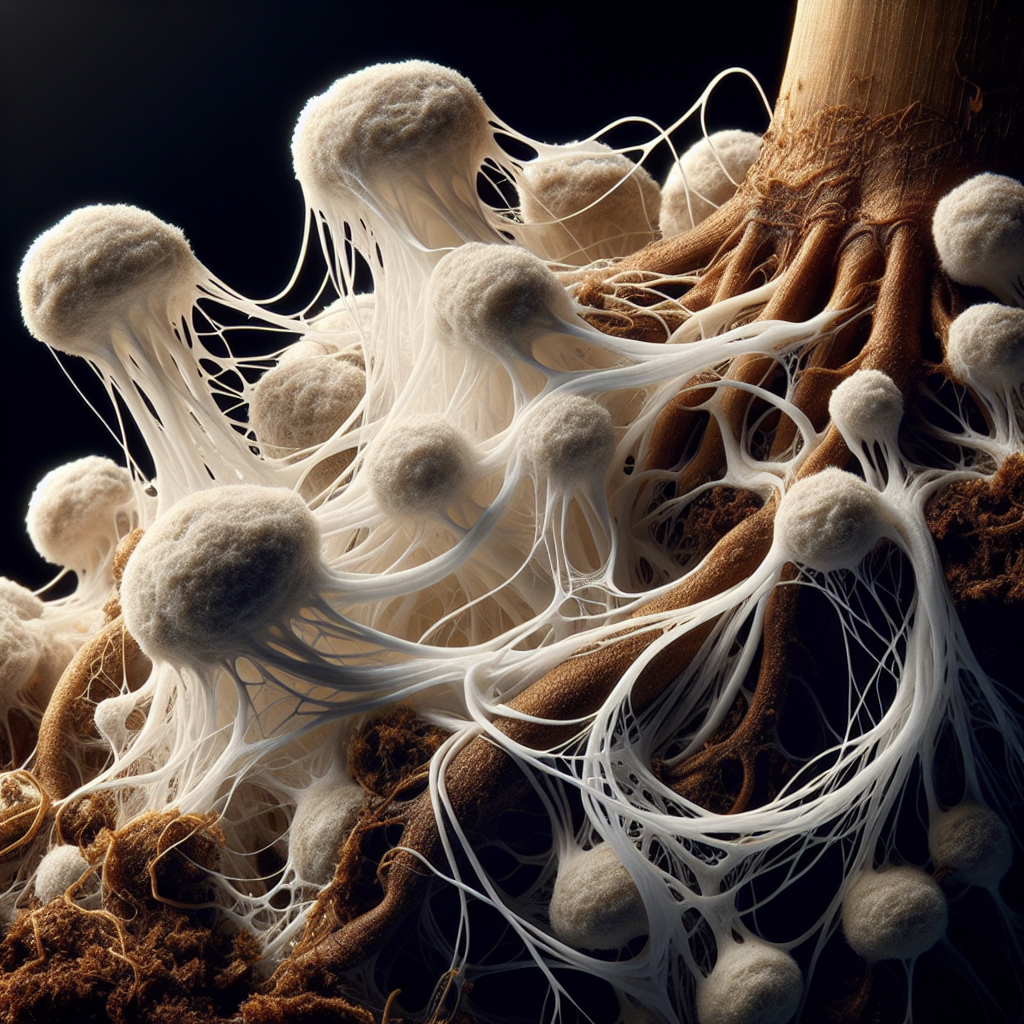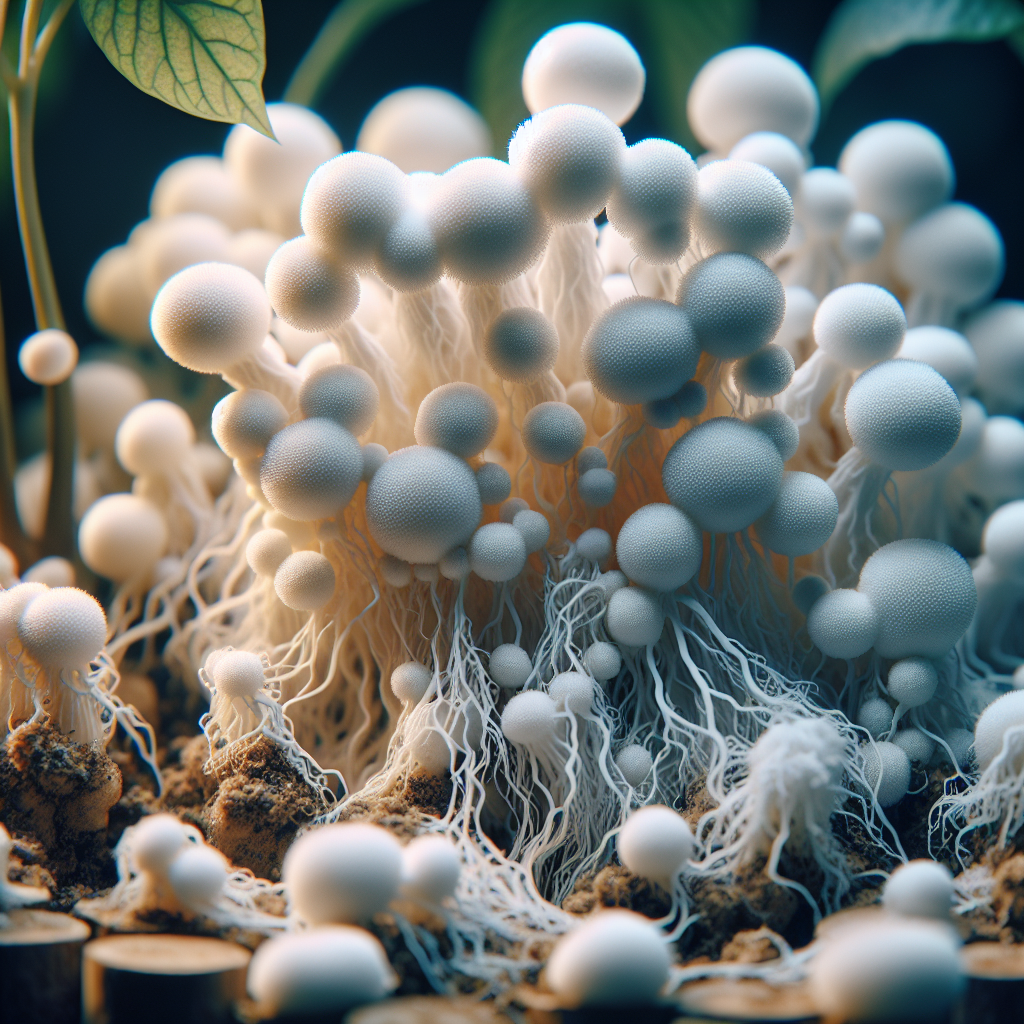In the informative article, “Understanding the Effects: Is Mycelium Bad for Plants?”, we explore the complex and intriguing relationship between plants and mycelium. While commonly present in a variety of environments, the effects and significance of mycelium on plant health can raise many questions. Within these forthcoming discussions, you can expect a comprehensive analysis of this dynamic ecological interaction, shedding light on its influence over plant development, nutrient absorption, and overall growth. The complex interplay between these two armies of nature, one microscopic and one visible, is set to reveal fascinating insights into the realm of mycology and plant physiology. So, fasten your seat belts for an engaging botanical journey!
Understanding Mycelium
Definition of Mycelium
Mycelium is the vegetative part of a fungus. It is a delicate, thread-like network of single cells which spread throughout various organic compounds, such as soil, wood, and even living organisms. This unseen vast subterranean network plays a crucial role in the life cycle of the fungus, including growth, reproduction,and feeding.
Biological Role of Mycelium
Mycelium plays a critical role in the life cycle of the fungus, driving both growth and reproduction. It grows by extending its hyphae, thin filamentous cells, and absorbing nutrients from the surrounding environment. Actively recycling organic material, it also fosters soil fertility and supports ecosystem functionality. More so, it aids in the creation and dispersion of spores, enabling the fungus to reproduce efficiently.
Mycelium in the Ecosystem
In nature, mycelium serves as one of the primary decomposers, breaking down deceased plant and animal material into simpler elements that can be reused by the ecosystem. Through this process, it aids in maintaining the health and balance of ecosystems. It fosters the circulation of nutrients and enhances soil structure. Furthermore, it plays a significant role in soil cohesion and stabilization.
The Relationship Between Mycelium and Plants
Mycelium as a Nutrient Source for Plants
Mycelium, through its efficient decomposition and recycling of organic matter, helps to release vital nutrients into the soil, making them more accessible to plants. The network of mycelium essentially acts as an extension of a plant’s root system, increasing its reach and absorption capacity. Therefore, plants can feed more efficiently and robustly, acquiring a wider range of nutrients necessary for their growth and development.
Interaction Between Plant Roots and Mycelium
The relationship between plant roots and mycelium is a complex and symbiotic one. Plant roots excrete sugars and other organic compounds, attracting nearby mycelium. In return, the mycelium enhances the plant’s absorption capacity and makes a more comprehensive range of soil nutrients accessible to the plant. This remarkable biological collaboration greatly benefits both parties.
Mycorrhizal Relationships Explained
A mycorrhizal relationship describes the unique symbiosis between mycelium and plant roots. Many plants need this interaction to gain adequate nutrients and flourish. This relationship allows plants to better access and absorb nutrients, while the fungus receives sugars and other organic compounds from the plant. This unique partnership enhances the plant’s survivability and health, contributing significantly to plant biodiversity.

Advantages of Mycelium for Plants
Promotion of Plant Growth
By making various nutrients more accessible, mycelium helps to reinforce plant growth. It increases the plant’s absorption capacity, enabling it to take up more water and minerals from the soil. This not only promotes the growth of the individual plant but can also significantly enhance the productivity and health of entire plant communities.
Mycelium Enhancing Soil Health
Healthy soil is essential to robust plant growth, and mycelium contributes to this in many ways. Firstly, by breaking down organic material, it enriches the soil with nutrients. Secondly, the network of mycelium improves soil structure, making it more porous and well-drained. These features create an environment conducive to plant growth.
Resistance to Diseases
Mycelium can help plants build resistance against certain diseases. The physical barrier created by mycelium around plant roots can suppress harmful pathogens and promote a healthier soil microbiome. Also, some types of mycelium can trigger immune responses in plants, making them more resilient to various diseases.
Potential Negative Effects of Mycelium on Plants
Overgrowth Scenarios
Unchecked growth of mycelium can prove detrimental to plants. Excessive mycelium can compete with plants for nutrients, hindering rather than fostering their growth. Also, it may become invasive, encroaching on the root systems of plants and potentially causing harm.
Potential for Disease Transmission
While mycelium can protect plants from some diseases, it also has the potential to spread other infections. Certain fungi, like those causing root and stem rots, spread their harmful spores via mycelium. Thus, an extensive network of mycelium can sometimes contribute to the transmission and outbreak of fungal diseases.
Impact on Non-Mycorrhizal Plants
Mycelium does not interact beneficially with all plant species. Non-mycorrhizal plants, which do not form symbiotic relationships with mycelium, may suffer in environments rich in mycelium. An abundance of mycelium can increase competition for nutrients and even make the soil hostile for these non-mycorrhizal plants.

Understanding Fungal Diseases in Plants
Common Diseases Caused by Fungi
Fungi cause several common plant diseases. These may include root rot, wilts, blights, and rusts. These diseases often cause severe damage to crops, trees, and other plants, leading to significant economic loss. In worse cases, they can wipe out entire plantations and threaten food security.
Role of Mycelium in Fungal Diseases
Mycelium plays a central role in fungal diseases. Through its widespread network, the fungal pathogens can quickly colonize host plants and spread their harmful spores. This fast spread is especially detrimental in agricultural settings, where dense plantings can facilitate rapid disease transmission.
Preventive Measures for Fungal Diseases
Preventive measures are essential to managing fungal diseases. These can include choosing disease-resistant varieties, rotating crops, and practicing good sanitation. Chemically, many fungicides are available to preemptively treat against potential outbreaks. Additionally, boosting soil health can support a diverse microbiome, which naturally competes against harmful fungi, preventing their domination.
Role of Mycelium in Soil Health
Nutrient Cycling and Mycelium
Mycelium is key in recycling nutrients in the soil. By decomposing organic material, it converts complex organic compounds into simpler nutrients. This process ensures that the essential elements like nitrogen and phosphorous are readily available for uptake by plants, maintaining the nutrient cycling within the ecosystem.
Improvement of Soil Structure
The mycelial network contributes significantly to soil structure. The hyphae bind soil particles together, improving soil aggregation and porosity. The resulting spongy structure enhances root penetration, moisture retention, and air circulation in the soil, all of which are favorable to plant growth.
Contribution to Soil Biodiversity
Mycelium contributes to soil biodiversity by providing a habitat for many soil organisms. The mycelial network is often associated with a diverse array of bacteria, protozoa, and nematodes. This abundance of life contributes to a robust soil ecosystem, supporting plant health and productivity.
Mycelium: Friend or Foe?
Weighing the Pros and Cons
Mycelium can both contribute positively to and potentially harm plant health. Factors such as species of fungus, plant type, and environmental conditions play a decisive role in the balance of this relationship. While mycelium can offer significant benefits, such as nutrient uptake and disease resistance, the potential for disease transmission or competition for resources must also be considered.
Variable Effects Based on Plant Species
The effect of mycelium on plants can vary significantly based on the species of plant. Some plants form beneficial mycorrhizal relationships with mycelium, while others do not. Non-mycorrhizal plants may even suffer from competition with mycelium for resources. Therefore, it’s crucial to understand the specific interactions between mycelium and the plant species in question.
Importance of Balanced Mycelial Networks
A balanced mycelial network is important to support healthy plant communities. A diversity of fungal species ensures the robust functioning of the soil ecosystem, each with its specific role and interaction with plants. Overdominance of a single species, however, can disrupt this balance and potentially lead to negative effects.
Managing Mycelium in Plant Cultivation
Creating Optimal Conditions for Beneficial Mycelium
Proper management can help promote beneficial types of mycelium while suppressing harmful ones. Supplying organic matter, avoiding overwatering or overfertilization, and maintaining good soil structure can all support beneficial mycelium. Regular monitoring and soil health checks are invaluable in diagnosing any problems early on.
Suppression of Harmful Mycelium
Certain gardening practices can help suppress harmful mycelium. For instance, crop rotation can prevent the buildup of disease-causing fungi in the soil. Additionally, using competitive fungi or bacteria, through the application of compost or biocontrol agents, can help keep harmful mycelium at bay.
Role of Gardening Techniques
Gardening techniques can significantly influence mycelium in the soil. For instance, tilling can physically disrupt the mycelial network, making it less effective. Meanwhile, the use of organic mulches can provide additional resources for the mycelium to grow and benefit the garden as a whole.
Examples of Beneficial and Harmful Mycelium Interactions
Case Studies of Beneficial Mycelium-Plant Interactions
There have been numerous studies highlighting beneficial mycelium-plant interactions. Notably, research has shown that mycelium can significantly enhance the growth and yield of various crops, such as maize, wheat, and cotton. Other examples highlight mycelium’s role in promoting tree health and reforestation efforts.
Examples of Mycelium-Related Plant Diseases
There have also been many cases showing the negative impacts of mycelium on plants. Notably, many plant diseases, such as root rot and wilt, are caused by fungi that spread through the mycelial network. In certain cases, these diseases can ravage entire crop fields, causing significant agricultural losses.
Impact on Crop Yields and Quality
The interaction between mycelium and plants does not just influence the number of crops produced, but also their quality—another significant factor in agriculture. For instance, healthy mycorrhizal relationships can enhance the nutrient content of crops, making them more nutritious. Conversely, fungal diseases can dramatically reduce the quality and marketability of produce.
Research and Future Prospects for Mycelium and Plants
Recent Findings in Mycelium Research
Recent research has shed light on various aspects of mycelium-plant relationships, enhancing our understanding of this vital interaction. Researchers have discovered more about the extent of mycelium’s influence on soil health, plant performance, and even the overall balance of ecosystems. More so, there has been growing interest in the potential of mycelium as a soil amendment and biocontrol agent.
Potential Applications for Sustainable Agriculture
Mycelium holds promise as a tool for sustainable agriculture. By improving soil health and promoting plant growth, it could help reduce the need for chemical fertilizers and pesticides. Additionally, mycelium-based products, such as biocontrol agents and soil conditioners, could be developed to enhance sustainable farming practices.
Unresolved Questions and Future Research Directions
Despite significant progress, many questions about mycelium-plant interactions remain unresolved. For instance, the intricate ways in which mycelium communicates with plants, and how environmental stressors may impact this relationship, are not fully understood. Future research addressing these and other questions will broaden our understanding of this incredible relationship, paving the way for innovative agricultural solutions.
